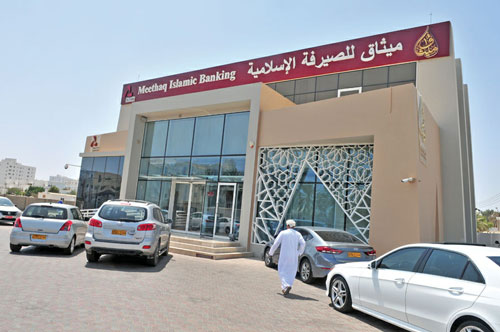Muscat
Oman’s Islamic banking industry is continuing to perform well in spite of the economic headwinds caused by the coronavirus pandemic and lower oil prices.
The market share of Islamic banking assets in the overall banking sector assets has reached to 14.5 per cent in February 2021 and Oman’s Islamic banking assets now stand at RO5.4bn, according to the latest statistics released by the Central Bank of Oman (CBO).
Islamic banking’s share of the total banking system has been steadily growing in Oman since the launch of the Sharia’a-complaint banking industry in the country eight years ago.
‘Total assets of Islamic banks and windows increased by 11 per cent on an year-on-year basis to RO5.4bn in February and constituted about 14.5 per cent of the banking system’s assets as of end-February 2021,’ CBO said in its monthly statistical bulletin.
Oman’s Islamic banking entities provided total financing of RO4.4bn at the end of February 2021, recording an year-on-year growth of 9.9 per cent.
Total deposits held with the Islamic banks and windows also increased by 10 per cent to RO3.8bn, the CBO statistics showed.
Global credit ratings agency Moody’s recently rated Oman as the second fastest-growing Islamic financing market in the world.
‘Turkey and Oman are the fastest-growing Islamic financing markets.
Demand for Sharia’a-compliant products in Oman is strong, reflecting its predominantly Muslim population.
Islamic banking accounted for 14 per cent of banking assets as of September 2020, up from 2 per cent in March 2013, a year after the introduction of the Islamic banking regulatory framework,’ Moody’s said in a recent report.
The ratings agency noted that the rapid growth of Islamic banking assets in Oman has strongly outpaced the growth in conventional banking assets in recent years, which reflects Islamic banking assets’ relatively recent introduction and low but increasing penetration.
Moody’s expects Islamic banking to reach 20-25 per cent of Omani banking assets by 2025.
Echoing similar views, Fitch Ratings in a note said Oman’s Islamic banking sector growth is likely to continue apace in 2021 and 2022 following strong momentum in 2020 despite the pandemic and lower oil prices.
Fitch said Islamic financing in Oman grew by 9.5 per cent in 2020 compared with the conventional banks’ loan growth of just 2.1 per cent.
‘This was driven by demand for Islamic products, support from conventional banks offering Islamic products through their Islamic windows, and regulations supportive of Islamic finance.’
Fitch noted that the current market share of Islamic banking in the sultanate is high considering that Oman was the last GCC country to introduce Islamic banking in 2013.
‘In contrast, Islamic banking has been present in Indonesia and Turkey for more than two decades but market shares there are below 8 per cent,’ the ratings agency said.
Oman’s Islamic banks and windows, Fitch added, are adequately capitalised with reasonable profitability and asset quality indicators, reflecting conservative regulation and relatively low-risk business models.—Salaam Gateway










